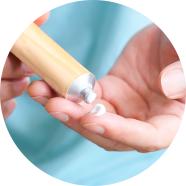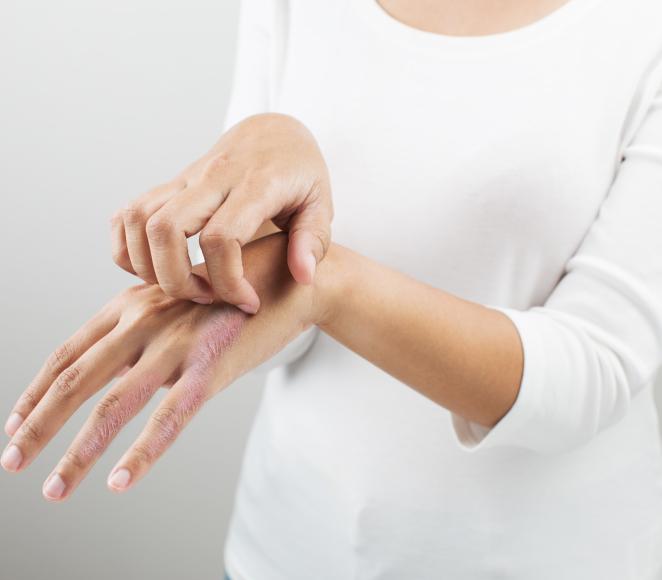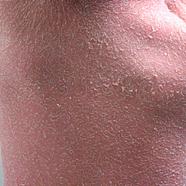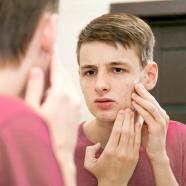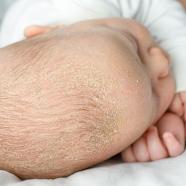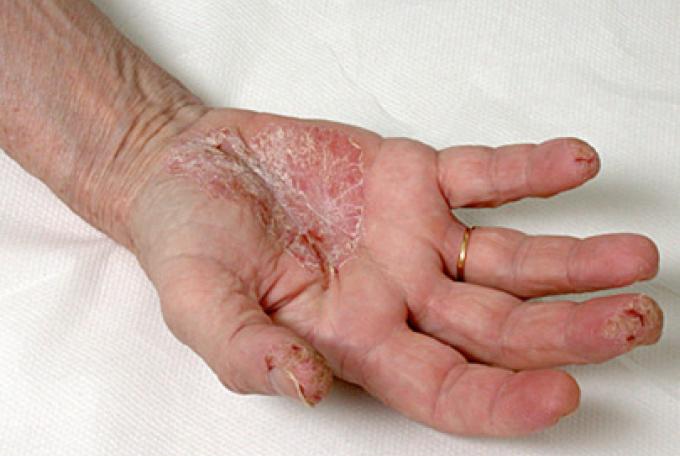
What is dyshidrosis ?
Dyshidrosis, also known as pompholyx, is a form of blistering eczema localised to the hands and feet. Blisters are found on the palms of the hands and soles of the feet as well as on the sides of the fingers and toes.
There are several varieties of dyshidrosis :
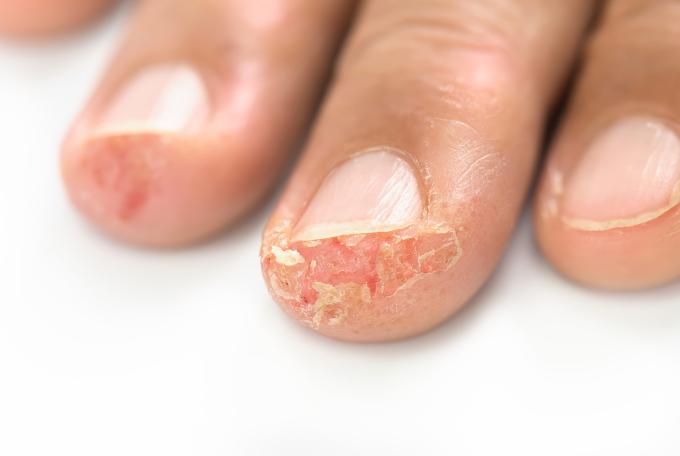
In simple dyshidrosis
- small closed blisters containing clear fluid, accompanied by severe itching, flare up on otherwise normal skin. When the skin underlying the blisters is red and inflammatory, this is dyshidrotic eczema.
Bullous dyshidrosis
- is caused by the confluence of vesicles (small blisters) to form bullae (large blisters), sometimes containing blood.
The disease always progresses by flare-ups with severe itching. Vesicles dry out, taking on a yellowish hue, and then shed in fine flakes. Old vesicles may be present alongside new ones. In bullous forms, the large blisters burst and there is weeping followed by formation of crusts. In the most severe forms, itching is so severe that it leads to incessant scratching, and the resulting pain is a considerable inconvenience for the patient in their daily life and work.
What causes dyshidrosis ?
This is not yet well known. Dyshidrosis is an eczema reaction, undoubtedly in response to various triggering factors that are not always evident.
In some cases no cause is found. These dyshidrosis cases progress in more or less frequent flare-ups, which are sometimes seasonal, confined to spring and summer, suggesting that heat and excessive sweating may play a role.
Dyshidrosis is sometimes a reaction to an fungal infection (dermatophytes) that invades the plantar interdigital spaces. It can also be genuine allergic contact dermatitis, especially caused by metals. Dyshidrosis can also occur in atopic eczema but it is not typical of this condition. It could also be triggered by injections (Immunoglobulins, anti-IL-17 monoclonal antibodies).
Finally, it has also been suggested that aggravating factors such as tobacco, alcohol and coffee consumption or stress could have a role.
Treatment of dyshidrosis
When there is an obvious cause, it is obviously important to treat it: anti-fungal treatment for a fungal infection, avoiding allergens in contact dermatitis
